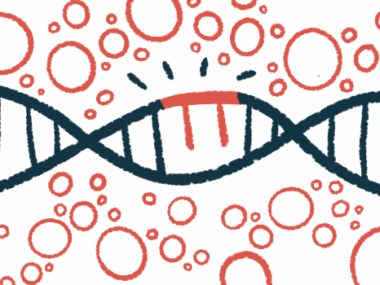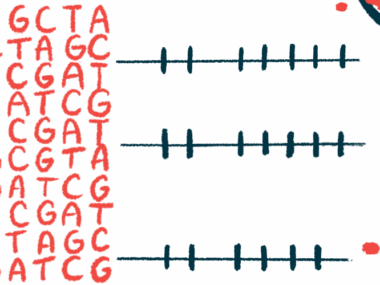New DYNC1H1 mutation a likely cause of SMA-LED in Chinese family
Gene mutation found in young boy, 3 relatives, linked to foot deformities
Written by |

A young boy and three of his relatives were found to carry a new mutation that was the likely cause of their spinal muscular atrophy with lower extremity predominance, known as SMA-LED, according to a report from China.
Researchers mapped the mutation to the DYNC1H1 gene, which has been previously linked to this rarer type of SMA, symptoms of which include a waddling gait and difficulty with balance.
“Our study broadens the mutational spectrum of DYNC1H1,” the researchers wrote, noting that “5 individuals from 3 generations [of this one family] had lower limb muscle atrophy and foot deformities.”
According to the team, expanding the list of known disease-causing mutations “can facilitate genetic counselling and prenatal diagnosis.”
The report, “Muscle and bone characteristics of a Chinese family with spinal muscular atrophy, lower extremity predominant 1 (SMALED1) caused by a novel missense DYNC1H1 mutation,” was published in BMC Medical Genomics.
Initial testing did not uncover new gene mutation
SMA occurs when the nerve cells that control muscle movement — known as motor neurons — become damaged or are lost, causing muscle weakness and wasting (atrophy).
In SMA-LED, weakness and atrophy are more pronounced in the lower limb muscles, such as those of the thigh. The symptoms, including difficulty with activities that require the use of the lower limbs, may start in infancy or early childhood, and progress slowly.
Sometimes deformities in the joints of the feet, ankles, and knees occur, leading the joints to become stiff and bent out of shape, and making it hard or painful to move.
Diagnosis of SMA-LED typically involves a physical examination, a review of the family’s medical history, and genetic testing to look for disease-causing mutations in the DYNC1H1 or BICD2 gene.
Both of these genes code for parts of the dynein-dynactin complex, a group of proteins that work together to move components around within cells. In neurons, they allow neighboring cells to communicate. Mutations in either DYNC1H1 or BICD2 can result in reduced chemical messaging between motor neurons.
Now, researchers in China reported the identification of a new mutation in the DYNC1H1 gene. This mutation likely was the cause of lower limb weakness and atrophy, and foot deformities, in an 8-year-old boy.
The boy was born with clubfeet, a condition in which the feet are twisted downward and inward. His clubfeet improved slightly with myofascial massage — a technique that can relieve pain derived from the myofascial tissues, or the tough membranes that wrap, connect and support muscles — by the time he was about 1 year old.
However, he later developed lower limb weakness and atrophy, which worsened over time. He also experienced delays in motor development and was unable to walk or stand without support.
A physical examination revealed muscle weakness and atrophy on both sides of the body and swelling around the knee joints due to crawling for long periods of time. However, genetic testing came back negative for known disease-causing mutations.
While the boy showed long-lasting muscle weakness and atrophy, his bone mineral density (BMD) was within normal range. BMD is a measure of the amount of mineral in bones that can be used to measure bone health.
“This is the first report of bone metabolism [bone growth and loss] and BMD in patients with SMALED1,” the researchers wrote.
An X-ray revealed no fractures in the back bones or the hip bones. Magnetic resonance imaging, commonly called MRI, revealed severe atrophy and fatty infiltration in the left leg muscles. Fatty infiltration, or a buildup of fat tissue within muscles, can contribute to the progression of muscle atrophy.
The boy’s mother and two of his uncles also had clubfeet and lower limb muscle weakness when they were born. None of them could walk on their own until the age of 8. His mother still had some foot deformities and a waddling gait, the team noted.
Our study broadens the mutational spectrum of DYNC1H1.
Knowing the family’s medical history, researchers asked for new genetic testing, which this time revealed a novel mutation in one copy of the DYNC1H1 gene. The boy’s mother and two uncles also were found to carry the mutation, called c.587T > C (p.Leu196Ser).
This mutation was consistent with an autosomal dominant way of inheritance, meaning that a single copy of the mutation is enough to cause the disease.
While the mutation had never before been reported, it was predicted by computer tools to change the protein’s shape, which may affect how it works, and likely be disease-causing.
The researchers noted that the symptoms of SMA-LED may overlap with those of other neuromuscular diseases, making it difficult to clinically diagnose. Thus, thorough genetic testing is “recommended to avoid delaying diagnosis,” the team concluded.







